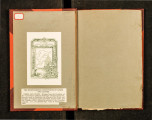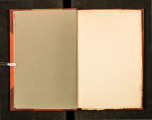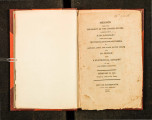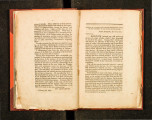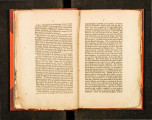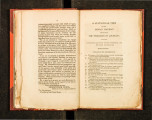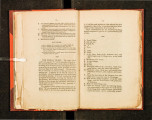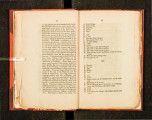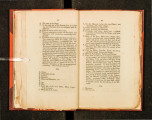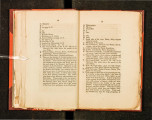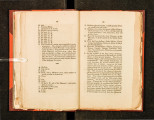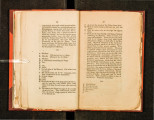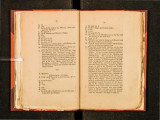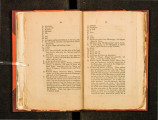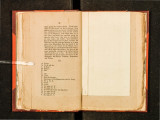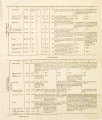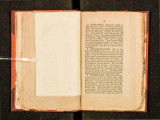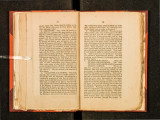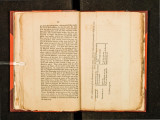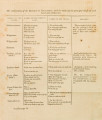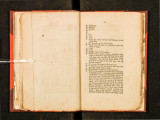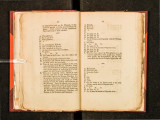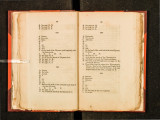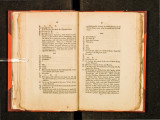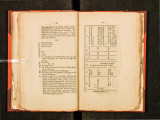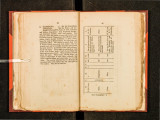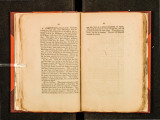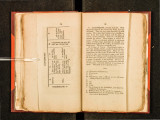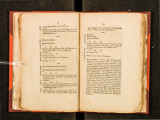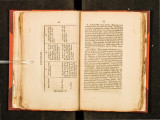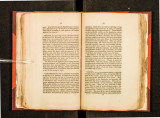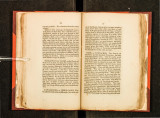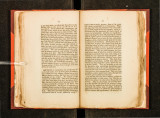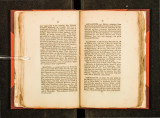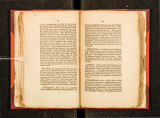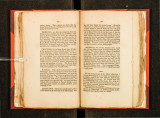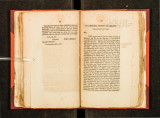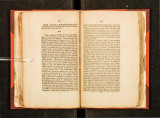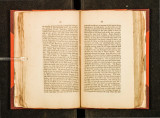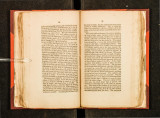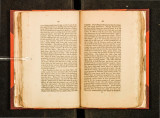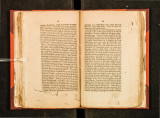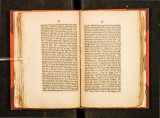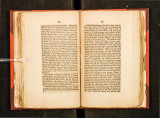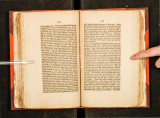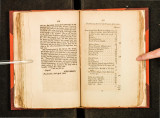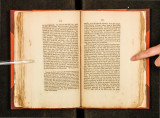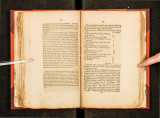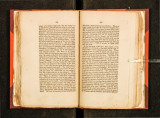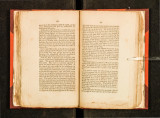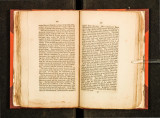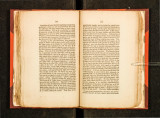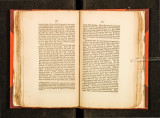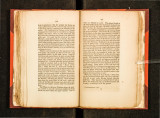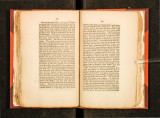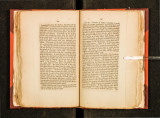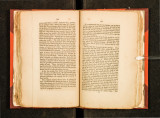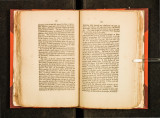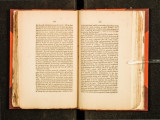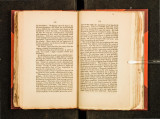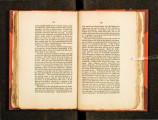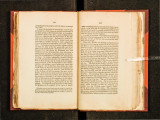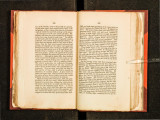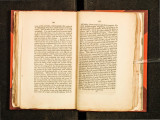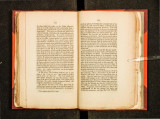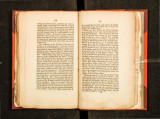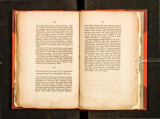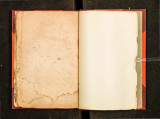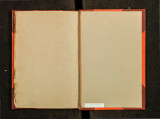| OCR Text |
Show '76 it into large mats, in which state they sell it t9 the Hietans, who, a'i they travel, cut off and eat It as they want it. Their tobacco they Inanufacture and cut as fine as tea, which is put into leather bags of a certain size, and is likewit-~e an article of trade. They have but few o-uns, and very little amnlllnition; what they have the; keep for war, ~nd hunt with ~he bow. Their meat i~ principally buffaloe; seldom kill a deer, though they are so plenty they. c01ne into ~heir ~illages and about their houses, hkc a dome~t1c ammal: elk: bear, wolves, antelope and wild hogs ar~ likewise plenty in their country, and white rabbits, or hares, as well as the common rabbit: white bears son1etimes come down amongst then1, and wolves of all colours. The men generally go entirely naked, and the women nearly so, only wearing a small flap of a piece of a skin. 'They have a number of Spaniards atnongst them, of fair complexion, taken from the settlement of St. a Fe, when they were children, who live as they do, and have no knowledge of where th~y came from. Their language differs from that of any other nation, the rfawakenoes excepted. Their present number of n1en is estin1ated at about 400. A great number of them, four years ago, were swept off by the small pox. HIETANS, or Comanches, who are likewise called by both names, ha vc no fixed place of residence; have neither towns nor villages; divided into so many different hordes or tribes, that they have scarcely any knowledge of one another. No estimate of their numbers can well be Inadc. They never remain in the same place mpre than a few days, but follow the buffaloe, the flesh of which is their principal food. Some of them occasionally purchase of the Panis, corn, beans and p\lmpkins; but they are so numerous, any quantity of these articles the Panis are able to supply them with, must make but a small proportion of their foQd. They have tents made of neatly dressed skins, fashioned in form of a cone, sufficiently roomy for a I 77 f1lmily of ten or twelve persons; those of the chiefs will contain occasionally 50 or 60 })ersons. \tVhen they stop, their tents are pitched in very exact order, so as to form regular streets and squares, which in a few minutes has the appearance of a town, raised, as it were, by inchantment ; and they are equally dexterous in striking their tents and preparing for a march when the signal is given ; to every tent two horses or mules arc allotted, one to carry the tent, and another the poles or sticks, which are neatly made of red cedar; they all travel OI'l horseback. 1,heir horses they never turn loose to graze, but always keep them tied with a long cabras or halter ; and every two or three days they are obliged to move on account of all the grass near then1 being eaten up, they have such numbers of horses. rfhey are good horsemen and have good l~orses, most of which arc bred by themselves, and bemg accustomed fron1 when very young to be handled, they are remarkably docile and gentle. 1,hey sometimes catch wild horses, which are every where amongst them in immense droves. Thev hunt down the buffaloc on horseback, and kill the~ either with the. bow ?r a sharp stick like a spear, which they carry m the1~ hands. 1'hey are generally at war with the . Span~ards, often committing depredations upon the mhab1tants of St. a Fe and St. Antoine; but have a~ways been friendly and civil to any French or Amencans wh? have been amongst them. They are strong and a.thletie, and the elderly n1en as fat as though they hacll~vecl.upon English beef and porter. It 1s satd the man who kills a buffaloe, catches the bloo? and drinks it while warm; they likewise eat the hver raw, l;>efore it is cold, and use the gaul by way of ~auce: They are, for savages, uncommonly clean1ly m the1r persons: the dress of the women is a lono- 5' ?ose robe, that req.ches from their chin to the ground, tied round with a fancy sash, or girdle, all n1ade of n~atly dressed leather, on which they paint fio-ures of different colours and significations: the dres~ of the |



